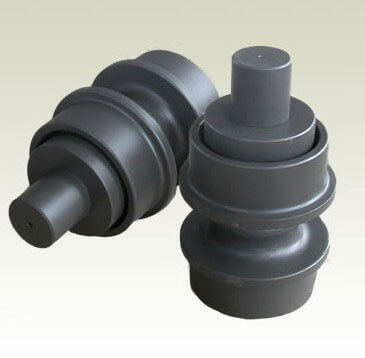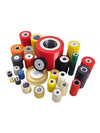ABS (Acrylonitrile Butadiene Styrene) plastic has become a top choice for many automotive components and parts. This versatile thermoplastic polymer offers an excellent balance of properties that make it well-suited for use in vehicles. In this article, we’ll examine the benefits of ABS for auto manufacturing and why it has emerged as a leading material for car makers in the United States and worldwide.

What is ABS Plastic?
ABS is a common thermoplastic polymer made from acrylonitrile, butadiene, and styrene. It was first produced commercially in the 1950s and today has a wide range of applications from Lego bricks to auto parts. ABS is lightweight, rugged, and economical, which helps explain its prevalence in many industries. For the automotive sector, it provides an optimal combination of strength, impact resistance, and heat tolerance.
ABS is considered an engineering plastic due to its enhanced mechanical properties versus standard plastics. But it is still relatively inexpensive compared to specialty polymers. This combination of performance and affordability is what makes ABS such a popular choice for vehicle components.
Why Use ABS Plastic for Auto Parts?
There are several key properties that make ABS ideal for many automotive applications:
- Impact Resistance – ABS absorbs shocks and crashes well, making it perfect for bumpers, body panels, and interior trim parts. The butadiene rubber component gives ABS toughness and flexibility on impact. This ability to withstand accidents helps protect passengers and the rest of the vehicle.
- Strength and Durability – In addition to withstanding impacts, ABS has high tensile strength and hardness for long-lasting components. It stands up well to chemicals and environmental conditions like temperature swings, road grime, and UV exposure. Parts keep their shape and structural integrity.
- Lightweight – ABS is much lighter than metals like steel traditionally used in car bodies and frames. This helps to substantially cut weight and improve fuel efficiency and performance. Being up to 10% lighter than metal alternatives is a major advantage.
- Heat Resistance – While not for engine parts, ABS can withstand temperatures up to 180°F, sufficient for under-hood components. This is a key reason ABS is popular for custom engine bay dress-up and covers.
- Easy to Manufacture – ABS can be injection molded into complex shapes that would be difficult or impossible with other plastics or metals. This allows great flexibility in aesthetic designs. It also enables consolidation of multiple parts into single components.

ABS Plastic vs. Other Polymers for Auto Parts
Compared to other plastics used in vehicle manufacturing, ABS offers some advantages:
- ABS has higher impact strength than polypropylene, making it better for bumpers and internal trim parts that need durability.
- It is more economical than engineering plastics like nylon, acetal, and polycarbonate which can cost 2-3x more.
- ABS is not as brittle as acrylic and polystyrene in cold temperatures. This matters especially in colder climates.
- It is lighter than glass filled nylon, and more heat resistant than polypropylene.
For automakers, ABS hits a sweet spot between performance, cost, and manufacturability. It’s easy to see why it is prevalent.
Specific Applications of ABS in Vehicles
Some of the many uses of ABS plastic in cars and trucks include:
- Dashboard and interior trim – ABS withstands daily wear and tear from drivers and passengers. Its finish has a pleasant feel and appearance. ABS remains a primary plastic for interior fittings.
- Wheels and hubcaps – ABS is easily colored and provides a glossy, attractive surface. It resists curb damage and corrosion from road salt far better than steel wheels.
- Bumpers – The impact strength of ABS makes it perfect for absorbing low speed crashes. Bumpers keep damage away from more fragile components like headlights.
- Various under-hood parts – ABS resists temperatures and chemicals in the engine compartment better than other thermoplastics. Use it for custom covers and dress-up engine bay parts.
- Body panels – New manufacturing techniques allow ABS plastic panels to replace metal ones. This increases styling flexibility and reduces weight. Expect greater use of ABS body components moving forward.
ABS plastic has proven effective in both visible interior and functional under-hood applications thanks to its well-balanced properties.

Manufacturing Process of ABS Parts
The vast majority of ABS components in vehicles are injection molded. Some advantages of this process include:
- Ability to mold complex and detailed shapes not possible with steel or other materials. This allows freedom of design.
- Consistent quality and dimensional precision from mass production. Modern manufacturing ensures tight tolerances.
- Automated manufacturing drives down per part costs. ABS is cheaper to produce than machining metal.
- Minimal secondary finishing required compared to other processes. Parts come out ready for assembly.
- Tooling costs are lower for ABS injection molding versus metal stamping. This makes ABS ideal for moderate production runs.
Injection molding enables efficient, high-volume production of ABS parts to meet automakers' demands. It's the go-to manufacturing technique for quality ABS components.

The Future of ABS in Automotive Design
As cars continue evolving, especially with electrification, plastics like ABS will take on an even greater role. Some trends include:
- Lightweighting – New fuel economy standards will drive increased use of plastics to replace metals. This can reduce vehicle weight by 10% or more. Lighter cars boost range and performance.
- Customization – ABS lends itself to mass customization through innovative manufacturing techniques. Parts can be personalized for individual models.
- Reinforced composites – Adding reinforcements like glass fiber to ABS creates hybrid materials with even greater mechanical properties. This improves capabilities.
- 3D printing – Additive manufacturing opens new possibilities for low volume production of customized ABS parts. The aftermarket, in particular, can benefit from 3D printed ABS components.
ABS plastic still has much untapped potential for the next generation of ecologically-friendly automobiles. Expect its use to grow.

ABS has cemented itself as a mainstay material for both interior and exterior auto parts thanks to its excellent balance of properties. It combines strength, dimensional stability, and impact resistance with lightweight, easy manufacturing, and cost-effectiveness. Ongoing materials research and advances in manufacturing techniques like 3D printing will open new doors for ABS applications in ground transportation. Both for OEM and aftermarket parts, expect ABS to remain a top choice plastic material among professional mechanics and automotive enthusiasts.






